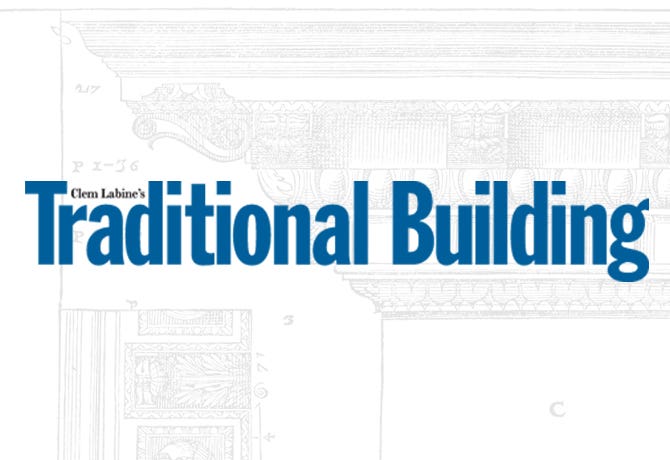
Judy Hayward
Master Builders and Minecraft: Two Historic New England Churches
A few weeks ago as part of the Traditional Building Conference Series Stop in New Haven, Connecticut, I was able to tour two of the greatest historic churches in New England: Center Church and Trinity Church. They sit side by side on the New Haven Green. They comprise a commanding ecclesiastical and architectural presence.
Center Church was the work of Asher Benjamin (1773-1845) and Ithiel Town (1784-1844) and Trinity Church was built by Ithiel Town. Benjamin mentored Town and both became leaders in a generation of men who made the transition from master builder to architect and engineer, before there were formal training programs in either discipline. Benjamin worked in Windsor, Vermont, where he reportedly established a building school.
We know that he advertised classes; we don’t know if anyone enrolled. We know that Thomas Dake, the great master builder who worked in Castleton, Vermont, and was born in West Windsor, was the right age to have been in contact with Benjamin but there is no documentation to prove that Dake was another success story in Benjamin’s efforts to train builders on the job-site, in person through discussion and instruction and in print with his builder guide books.
My career in preservation education has been enriched by years of interaction with architects, builders, craftspeople, engineers and preservation specialists. Typically, my work involves working with specialists to help them translate complex information into lesson plans and instructional activities and materials. Since there is a growing interest in distance education, and translating hands-on learning in preservation skills virtual medium is no small feat; I returned to graduate school three years ago to study educational technology. I am finishing the last course this week to earn a certificate in educational technology from the Graduate and Professional School of Marlboro College in Vermont.
Throughout my studies, I have been amazed at how often the “academy” of higher learning turns to skills-based education to explain how to teach. Professors talk about scaffolding their students to help them learn; apprenticeship programs are studied; games and technology that simulate the ability to actually do something are held in the highest esteem.
Yet when I gather with fellow preservation trades educators there is often a chorus of how disinterested local communities are in “vocational education.” Some say we shouldn’t use those words anymore, but use terms like technical and career education. I don’t believe Asher Benjamin or Ithiel Town would have cared what we call it. They would want us to know how to build so that structures stand the test of time; how to build so geometry is pleasing to the eye, and how to build so that architectural elements delight us.
Right now, I am learning how to use Minecraft as part of my studies. If there are reading this blog, my efforts to learn Minecraft may make them laugh. Most kids with access to a computer have been working in Minecraft for years, and they could mentor me; youth are the master builders of the virtual world. If you haven’t tried it; please do. The tasks include learning how to gather wood, turn it into useable pieces, fabricate tools and then construct. Professionally, I am delighted to find a game that is a clever means to teach building practice.
My professor shared a YouTube video produced as a project using Minecraft. It is a fine treatise on mission architecture and demonstrates a strong understanding of the relationships of rooms to each other and the use of certain spaces by function. Here‘s the link: Mission Architecture I wonder what Asher Benjamin and Ithiel Town would say… I bet they would ask, “Can we play, too?”
Judy L. Hayward spends her days pursuing a passion for historic architecture and the ways in which it can be reused to sustain and grow healthy communities. She develops courses in partnership with builders, architects, traditional craftspeople and others to teach both historic preservation and traditional building skills. She has one foot in the nonprofit world as executive director of Historic Windsor and the Preservation Education Institute and the other foot in the world of media and information services as education director for the Traditional Building Conference Series and Online Education Program.








